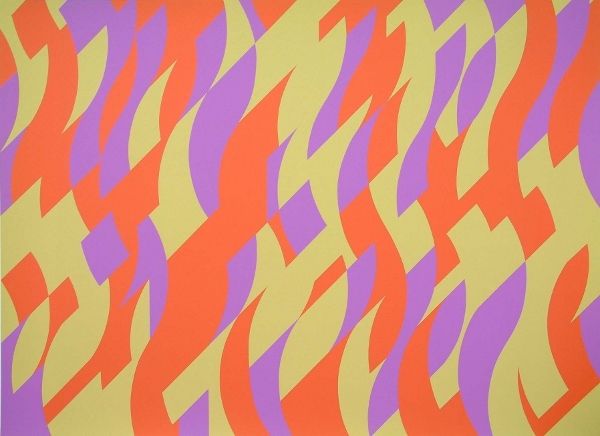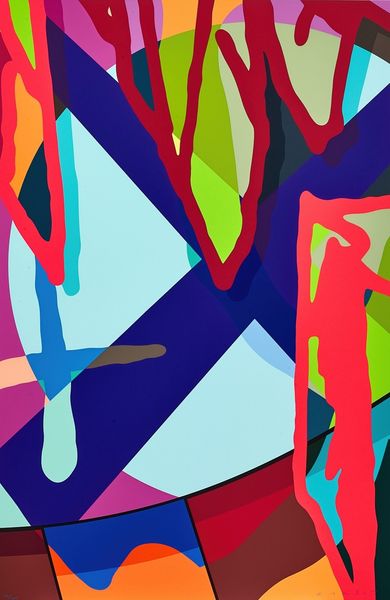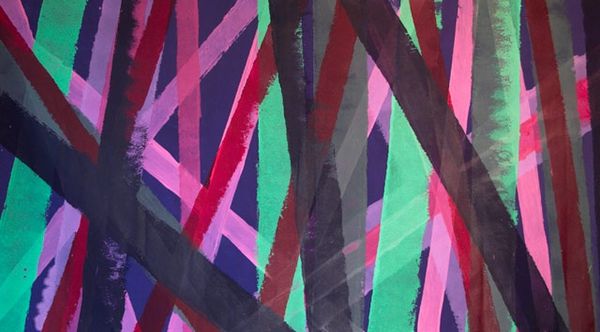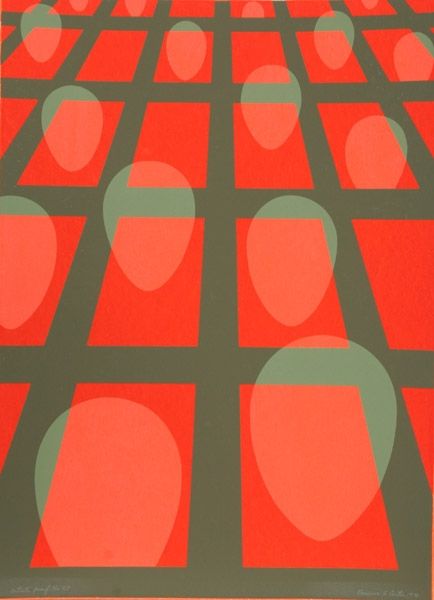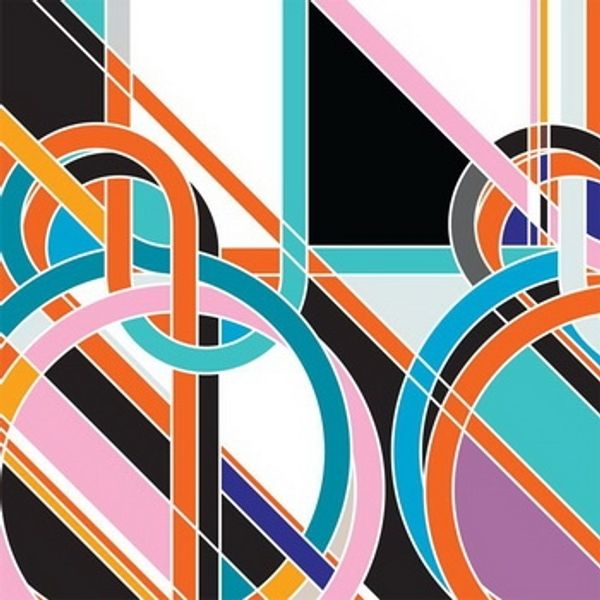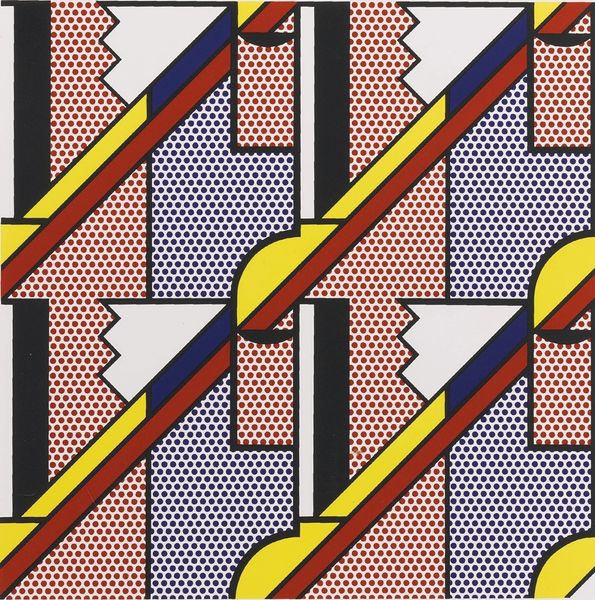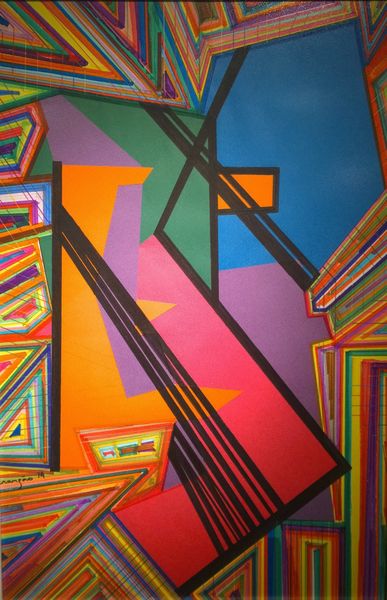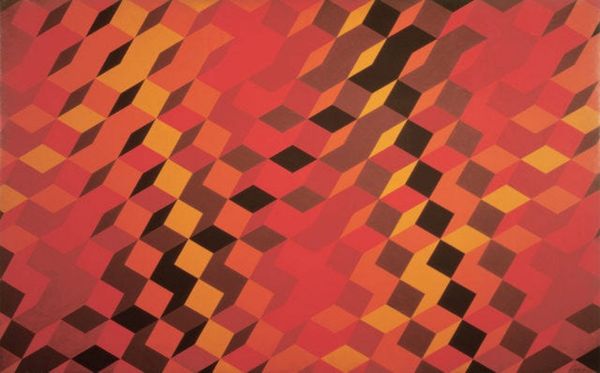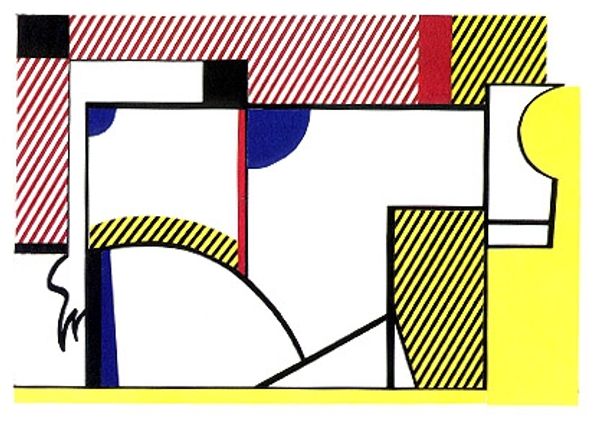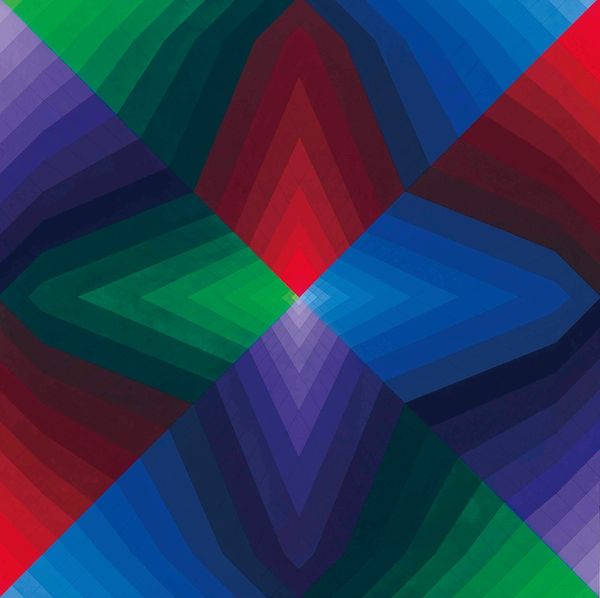
Modular painting with four panels, #2 1969
0:00
0:00
roylichtenstein
Museum Moderner Kunst Stiftung Ludwig Wien (MUMOK), Vienna, Austria
acrylic-paint
#
random pattern
#
pattern
#
op art
#
acrylic-paint
#
geometric pattern
#
abstract pattern
#
geometric
#
vertical pattern
#
abstraction
#
pop-art
#
line
#
pattern repetition
#
layered pattern
#
funky pattern
#
combined pattern
Dimensions: 243.8 x 243.8 cm
Copyright: Roy Lichtenstein,Fair Use
Editor: Here we have Roy Lichtenstein's "Modular Painting with Four Panels, #2" from 1969, created with acrylic paint. The interlocking shapes and varied textures create a visually arresting experience. It’s giving off some serious Op Art vibes! What’s your take on it? Curator: Immediately, I'm drawn to the materiality. Lichtenstein’s appropriation of Ben-Day dots, blown up to this scale, isn’t just aesthetic; it’s a commentary on industrial production and mass media's influence. What about the modularity? How does the work’s construction as discrete panels speak to the idea of reproducible art? Editor: That's fascinating! So the use of modules hints at mass production, sort of like the Warhol's screen prints? Curator: Precisely. Consider acrylic paint, too – a synthetic, relatively new medium at the time. Its even application, resisting the artist's 'touch', emphasizes a focus on the readymade. Think of how it shifts the concept of artistic labour. Is the "artist's hand" even visible? Where is the physical interaction from the creator? Editor: So, it's almost like he's highlighting the commercial printing process while simultaneously creating "high art". But isn’t that contradictory? Curator: It’s a deliberate contradiction, playing with the boundaries of art and commodity culture. What's interesting to me is how these "low-brow" means were consumed and valued by an elite art world. It really highlights the inherent socioeconomic complexities within the pop art movement itself, don’t you think? Editor: Definitely food for thought. I always thought Pop Art was just about the surface appeal. Curator: Well, next time look beneath the dots. There is often social commentary regarding both labour and consumption!
Comments
No comments
Be the first to comment and join the conversation on the ultimate creative platform.
